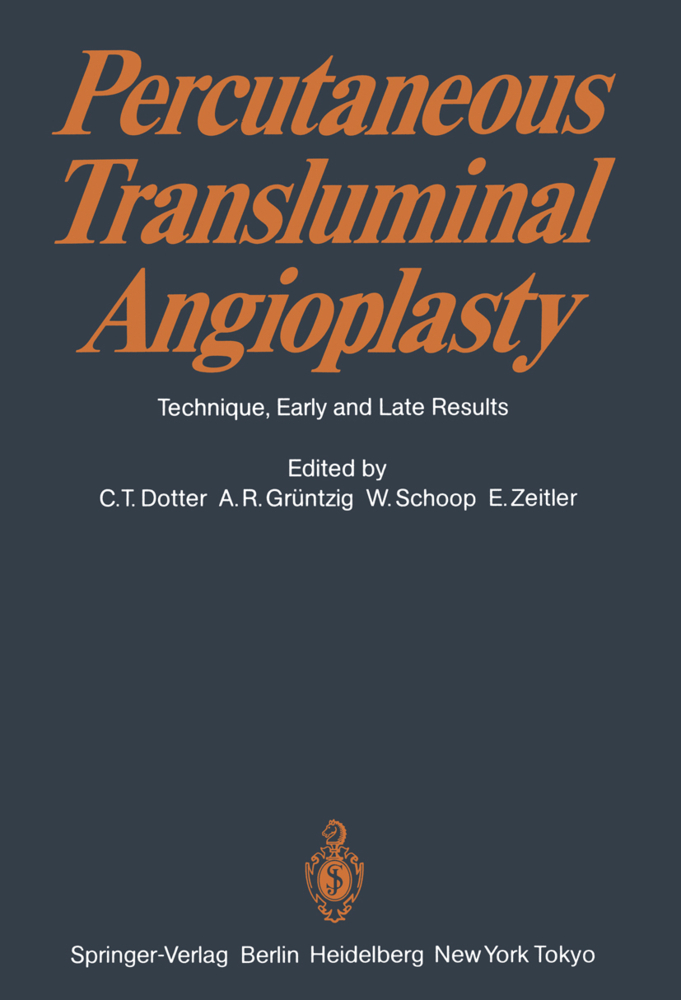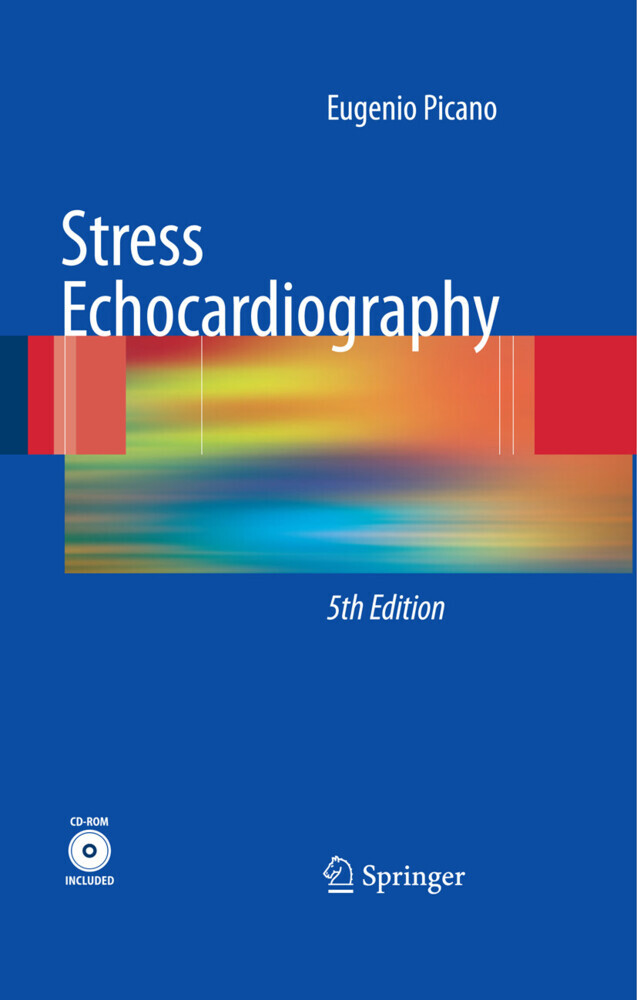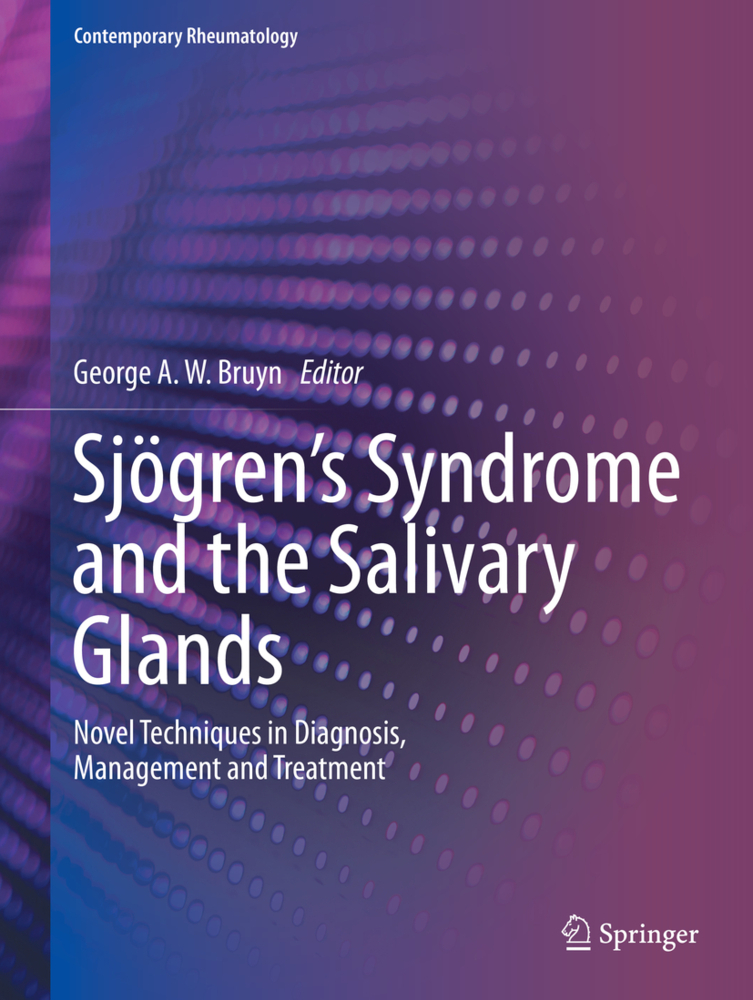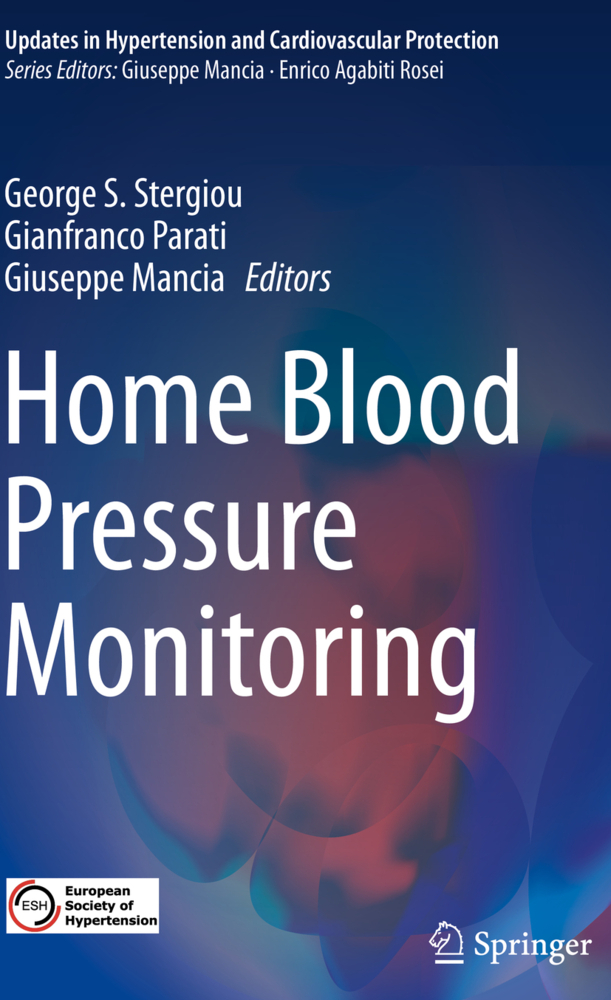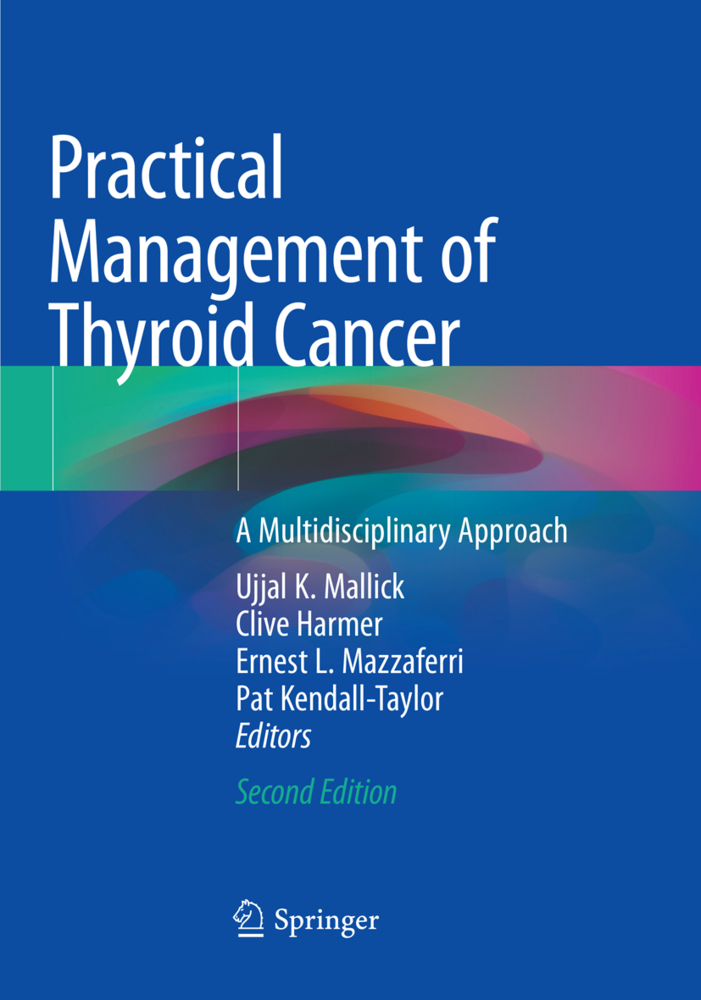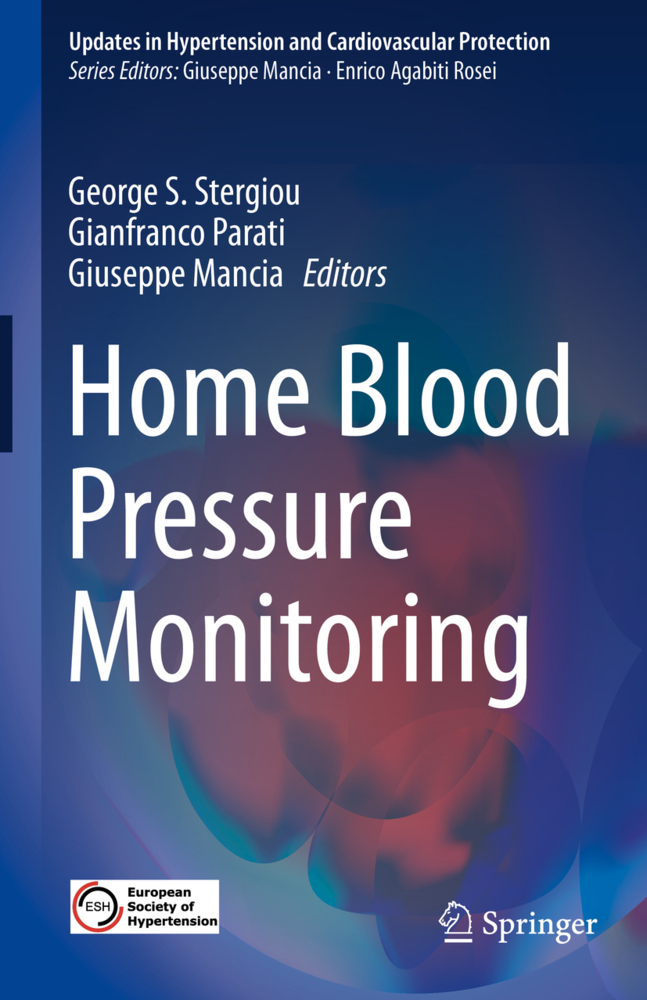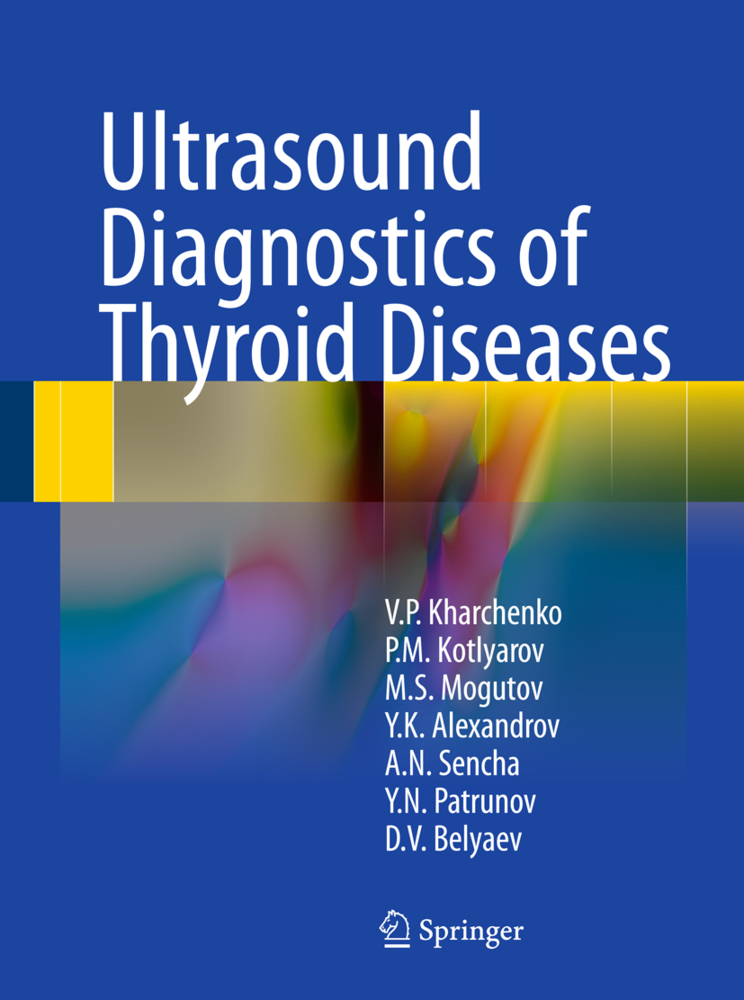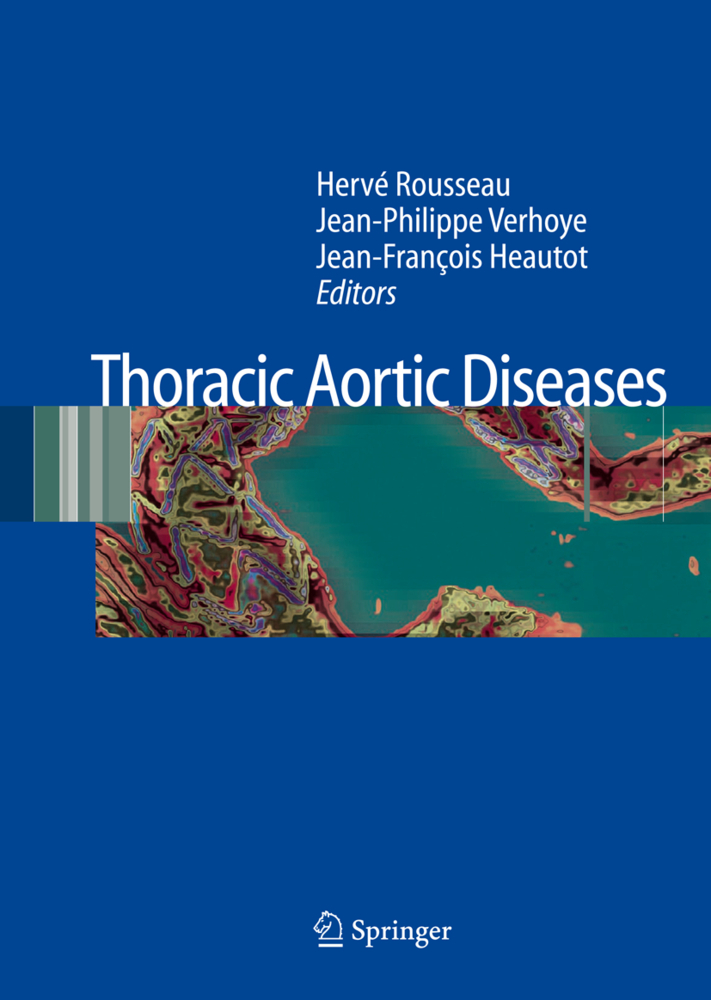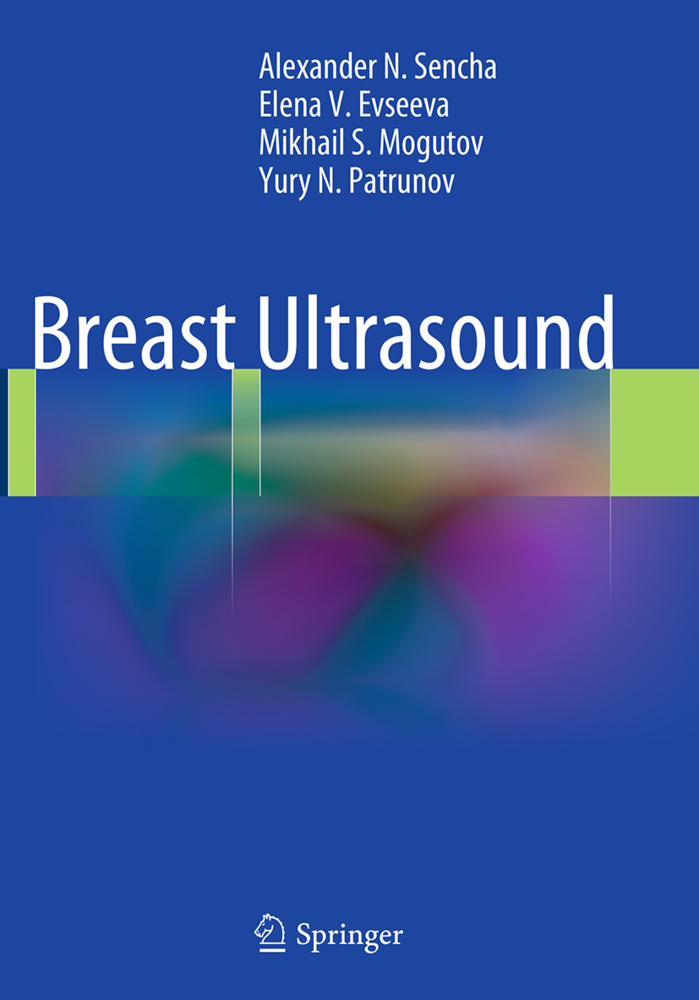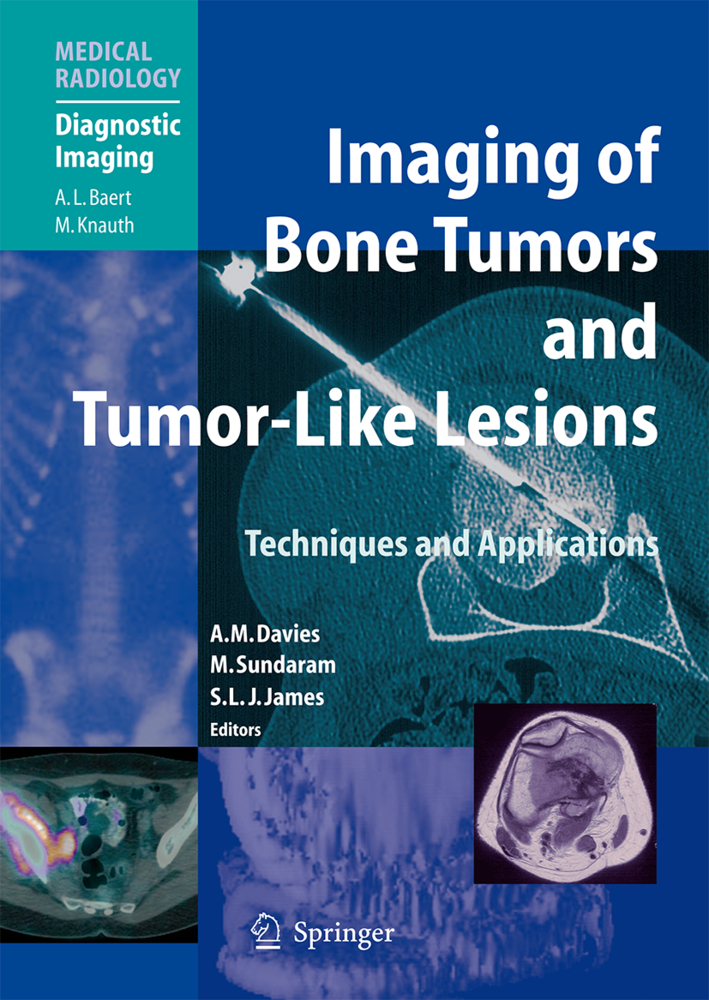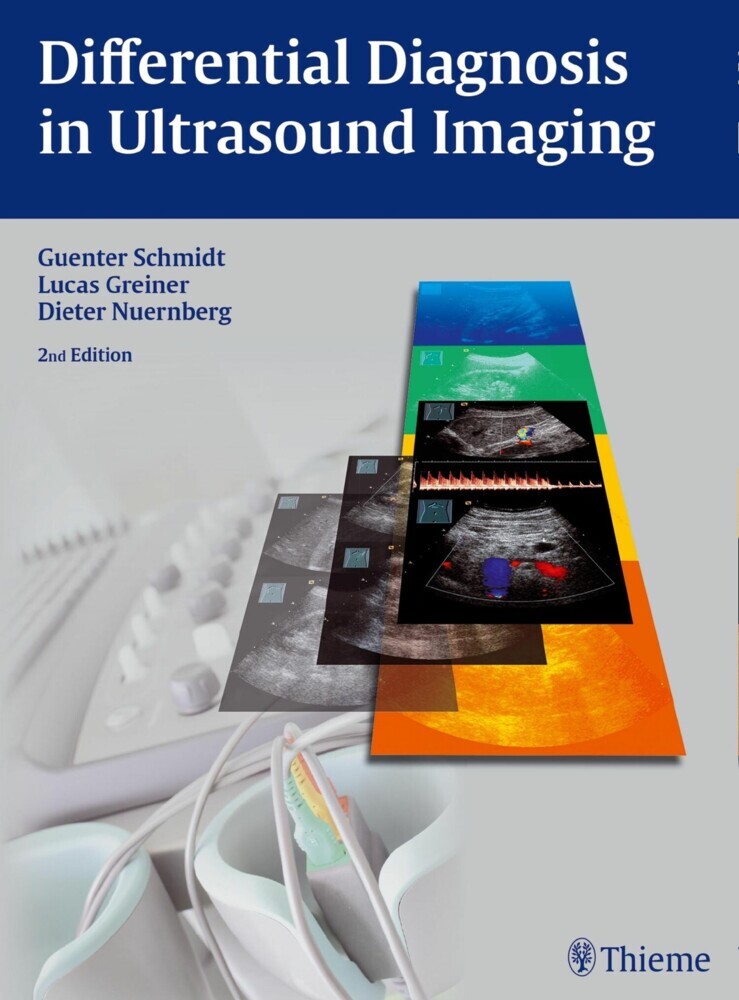Percutaneous Transluminal Angioplasty
Technique, Early and Late Results
Percutaneous Transluminal Angioplasty
Technique, Early and Late Results
In the past ten years, there have been significant advances in the diagnosis and therapy of arterial vascular disease. While long-term morbidity can only be improved by changing the patient's life-style and removing any risk factors that may be present(hypertension, hyperlipidemia,obesity,diabetesmellitus, nicotine abuse), symptomatic relief may be obtained by various procedures. Besides conservative treatment of arterial occlusive disease (physical therapy, medical treatment) and surgical vascular interventions (thromboendarterectomy, bypass procedures), balloon catheters introduced percutaneously under local anesthesia have found increased application in virtually all areas for the dilatation and recanalization of obstructive lesions in the past few years. The technique of balloon dilatation, as introduced by Griintzig as a further development of the percutaneous interventions by Dotter and Judkins, is no longer the decisive issue. The main objective of present clinical research is to de termine the proper indications and patient selection for this procedure, which has found its place between conservative treatment and surgery. The contents of this Symposium should provide some guidelines for the indi cations and postprocedural therapy for the referring physician, the angiologist, and for the radiologist and cardiologist performing the dilatation. We owe our thanks to all the specialists involved, who have provided us with the benefits of their experience. Mrs. H. Beilmann and Dr. M. Wojtowycz con tributed substantially to the preparation of the text. I would like to thank them and the staff of Springer-Verlag for their conscientious work in the interest of composition and publication quality.
2. Noninvasive Diagnosis and Natural Course of Arteriovascular Obstruction
3. Ultrasound Techniques for Follow-up of Hemodynamic Changes After Peripheral Transluminal Angioplasty
4. Digital Subtraction Angiography - A Method of Following Percutaneous Transluminal Angioplasty
5. Evaluation of Peripheral Transluminal Angioplasty by a Score System Applied to Routine Arteriographic Images
6. Exposure of Physicians and Patients to Radiation During Transluminal Dilatation and Recanalization According to Dotter
II. Percutaneous Transluminal Angioplasty: Instrumentation and Technique
7. Single Teflon Catheters
8. Basic Technology of Balloon Catheters
9. Dilatation and the Expanding Balloon Catheter. Advantages of the Expanding Balloon Catheter
III. Percutaneous Transluminal Angioplasty: Mechanism and Morphology
10. The Morphological Concept of Percutaneous Transluminal Angioplasty
11. Pathological Basis for Percutaneous Catheter and Ballon Revascularization
12. Results of Animal Experiments With Ballon Dilatation
13. Radiological Pattern at and After Angioplasty
IV. Medical Treatment
14. Percutaneous Transluminal Angioplasty: Adjunct Drug Therapy
15. Platelet Activation at the Time of Percutaneous Transluminal Angioplasty
16. Results With Additional Use of SP 54 in Percutaneous Transluminal Angioplasty
17. Nafazatrom: A New Antithrombotic Compound
V. Primary Results: Leg Arteries
18. Femoropopliteal Arteries
19. Angioplasty of the Iliac and Inguinal Arteries
20. Percutaneous Transluminal Angioplasty in Cases of Stenosis in the Region of the Infrarenal Abdominal Aorta and the Aortoiliac Bifurcation
21. Relapse Treatment by PercutaneousTransluminal Dilatation
VI. Percutaneous Transluminal Angioplasty in Combination With Fibrinolysis
22. Fibrinolysis and Transluminal Catheter Treatment: A Multistage Approach for the Removal of Chronic Arterial Occlusions
23. Clot Lysis in Peripheral Arteries.
24. Early Experience of Catheter Lysis.
VIL Complications
25. Complications During and After Percutaneous Transluminal Angioplasty.
26. Prevention of Complications in Percutaneous Transluminal Angioplasty.
VIII. Percutaneous Transluminal Angioplasty: Late Results in Leg Arteries
27. Long-Term Patency Rates After Percutaneous Transluminal Angioplasty for Iliac and Femoropopliteal Obstructions.
28. Ten-Year Results of Percutaneous Catheter Treatment in Cases of Femoropopliteal Arterial Occlusion in Stage II.
29. Late Results of Percutaneous Transluminal Angioplasty of Leg Arteries With Special Reference to the Popliteocrural Region
30. Late Results of Percutaneous Catheter Treatment in Iliac Stenoses - A Retrospective Study.
31. Factors Influencing Early and Late Follow-up Results After Percutaneous Transluminal Angioplasty of the Lower Limb Arteries.
32. Long-Term Results of Iliac and Femoropopliteal Angioplasty.
33. Long-Term Results of Transluminal Angioplasty of the Femoral Arteries.
34. Late Results After Percutaneous Transluminal Angioplasty of Iliac and Femoropopliteal Obstructive Lesions - A Cooperative Study.
35. Late Results After Percutaneous Transluminal Angioplasty for Iliac Artery Stenosis.
36. Percutaneous Transluminal Angioplasty for Limb Salvage - Progress in Therapy for Severe Leg Ischemia With Rest Pain and Gangrene.
IX. Percutaneous Transluminal Angioplasty of Coronary Arteries
37. Percutaneous Coronary Angioplasty - A Critical Review of ItsClinical Application.
38. Transbrachial Coronary Dilatation : Technique, Indications, Results, and Complications.
39. Transbrachial Transluminal Dilatation of Abdominal and Peripheral Arteries.
X. Percutaneous Transluminal Angioplasty for Supra-aortic Stenoses
40. Percutaneous Transluminal Angioplasty of the Vertebral Arteries.
40a. Percutaneous Transluminal Angioplasty of the Supra-aortic Arteries.
XI. Percutaneous Transluminal Angioplasty of Renal Arteries
41. Long-Term Results of Percutaneous Transluminal Angioplasty for Renovascular Hyperternsion Using the Coaxial Catheter Technique in Patients With Atherosclerosis and Fibromuscular Dysplasia.
42. Treatment of Renovascular Hypertension by Percutaneous Transluminal Angioplasty of Two Renal Arteries in a 5-Year-Old Boy.
43. Follow-up in Patients Undergoing Percutaneous Transluminal Angioplasty for Renal Artery Stenosis and Occlusion.
44. Renal Angioplasty in Hypertension: Technique, Radiological and Clinical Results, and Complications in 134 Dilatations.
45. Percutaneous Transluminal Angioplasty of Renal Arteries - A Therapeutic Principle. Case Report of 128 Patients With Renovascular Hypertension.
46. Technique, Indications, Complications and Results of Percutaneous Transluminal Renal Artery Dilatation.
XII. Indications for Percutaneous Transluminal Angioplasty
47. Special Indications for Angioplasty.
48. Results of Percutaneous Transluminal Angioplasty of the Deep Femoral Artery - A Preliminary Study.
49. Percutaneous Transluminal Angioplasty as a Complement to Surgery.
50. The Place of Percutaneous Transluminal Angioplasty in the Therapy of a Clinic for Vascular Diseases.
51. Indications for Percutaneous Transluminal Angioplasty From the Surgeon's Point of View.
52.Indications for Percutaneous Transluminal Angioplasty: The Nephrologist's View.
53. Indications for Percutaneous Transluminal Angioplasty: The Angiologist's Point of View
XIII. Percutaneous Transluminal Angioplasty Today and in the Future
54. Percutaneous Transluminal Angioplasty: State of the Art and Future Perspectives.
55. Transluminal Angioplasty: Results and Future Outlook.
56. Transluminal Angioplasty: A Comprehensive, Chronological Bibliography 1964-1982..
1. Transluminal Angioplasty: Method, Indications, and Role in Therapy
I. Diagnosis2. Noninvasive Diagnosis and Natural Course of Arteriovascular Obstruction
3. Ultrasound Techniques for Follow-up of Hemodynamic Changes After Peripheral Transluminal Angioplasty
4. Digital Subtraction Angiography - A Method of Following Percutaneous Transluminal Angioplasty
5. Evaluation of Peripheral Transluminal Angioplasty by a Score System Applied to Routine Arteriographic Images
6. Exposure of Physicians and Patients to Radiation During Transluminal Dilatation and Recanalization According to Dotter
II. Percutaneous Transluminal Angioplasty: Instrumentation and Technique
7. Single Teflon Catheters
8. Basic Technology of Balloon Catheters
9. Dilatation and the Expanding Balloon Catheter. Advantages of the Expanding Balloon Catheter
III. Percutaneous Transluminal Angioplasty: Mechanism and Morphology
10. The Morphological Concept of Percutaneous Transluminal Angioplasty
11. Pathological Basis for Percutaneous Catheter and Ballon Revascularization
12. Results of Animal Experiments With Ballon Dilatation
13. Radiological Pattern at and After Angioplasty
IV. Medical Treatment
14. Percutaneous Transluminal Angioplasty: Adjunct Drug Therapy
15. Platelet Activation at the Time of Percutaneous Transluminal Angioplasty
16. Results With Additional Use of SP 54 in Percutaneous Transluminal Angioplasty
17. Nafazatrom: A New Antithrombotic Compound
V. Primary Results: Leg Arteries
18. Femoropopliteal Arteries
19. Angioplasty of the Iliac and Inguinal Arteries
20. Percutaneous Transluminal Angioplasty in Cases of Stenosis in the Region of the Infrarenal Abdominal Aorta and the Aortoiliac Bifurcation
21. Relapse Treatment by PercutaneousTransluminal Dilatation
VI. Percutaneous Transluminal Angioplasty in Combination With Fibrinolysis
22. Fibrinolysis and Transluminal Catheter Treatment: A Multistage Approach for the Removal of Chronic Arterial Occlusions
23. Clot Lysis in Peripheral Arteries.
24. Early Experience of Catheter Lysis.
VIL Complications
25. Complications During and After Percutaneous Transluminal Angioplasty.
26. Prevention of Complications in Percutaneous Transluminal Angioplasty.
VIII. Percutaneous Transluminal Angioplasty: Late Results in Leg Arteries
27. Long-Term Patency Rates After Percutaneous Transluminal Angioplasty for Iliac and Femoropopliteal Obstructions.
28. Ten-Year Results of Percutaneous Catheter Treatment in Cases of Femoropopliteal Arterial Occlusion in Stage II.
29. Late Results of Percutaneous Transluminal Angioplasty of Leg Arteries With Special Reference to the Popliteocrural Region
30. Late Results of Percutaneous Catheter Treatment in Iliac Stenoses - A Retrospective Study.
31. Factors Influencing Early and Late Follow-up Results After Percutaneous Transluminal Angioplasty of the Lower Limb Arteries.
32. Long-Term Results of Iliac and Femoropopliteal Angioplasty.
33. Long-Term Results of Transluminal Angioplasty of the Femoral Arteries.
34. Late Results After Percutaneous Transluminal Angioplasty of Iliac and Femoropopliteal Obstructive Lesions - A Cooperative Study.
35. Late Results After Percutaneous Transluminal Angioplasty for Iliac Artery Stenosis.
36. Percutaneous Transluminal Angioplasty for Limb Salvage - Progress in Therapy for Severe Leg Ischemia With Rest Pain and Gangrene.
IX. Percutaneous Transluminal Angioplasty of Coronary Arteries
37. Percutaneous Coronary Angioplasty - A Critical Review of ItsClinical Application.
38. Transbrachial Coronary Dilatation : Technique, Indications, Results, and Complications.
39. Transbrachial Transluminal Dilatation of Abdominal and Peripheral Arteries.
X. Percutaneous Transluminal Angioplasty for Supra-aortic Stenoses
40. Percutaneous Transluminal Angioplasty of the Vertebral Arteries.
40a. Percutaneous Transluminal Angioplasty of the Supra-aortic Arteries.
XI. Percutaneous Transluminal Angioplasty of Renal Arteries
41. Long-Term Results of Percutaneous Transluminal Angioplasty for Renovascular Hyperternsion Using the Coaxial Catheter Technique in Patients With Atherosclerosis and Fibromuscular Dysplasia.
42. Treatment of Renovascular Hypertension by Percutaneous Transluminal Angioplasty of Two Renal Arteries in a 5-Year-Old Boy.
43. Follow-up in Patients Undergoing Percutaneous Transluminal Angioplasty for Renal Artery Stenosis and Occlusion.
44. Renal Angioplasty in Hypertension: Technique, Radiological and Clinical Results, and Complications in 134 Dilatations.
45. Percutaneous Transluminal Angioplasty of Renal Arteries - A Therapeutic Principle. Case Report of 128 Patients With Renovascular Hypertension.
46. Technique, Indications, Complications and Results of Percutaneous Transluminal Renal Artery Dilatation.
XII. Indications for Percutaneous Transluminal Angioplasty
47. Special Indications for Angioplasty.
48. Results of Percutaneous Transluminal Angioplasty of the Deep Femoral Artery - A Preliminary Study.
49. Percutaneous Transluminal Angioplasty as a Complement to Surgery.
50. The Place of Percutaneous Transluminal Angioplasty in the Therapy of a Clinic for Vascular Diseases.
51. Indications for Percutaneous Transluminal Angioplasty From the Surgeon's Point of View.
52.Indications for Percutaneous Transluminal Angioplasty: The Nephrologist's View.
53. Indications for Percutaneous Transluminal Angioplasty: The Angiologist's Point of View
XIII. Percutaneous Transluminal Angioplasty Today and in the Future
54. Percutaneous Transluminal Angioplasty: State of the Art and Future Perspectives.
55. Transluminal Angioplasty: Results and Future Outlook.
56. Transluminal Angioplasty: A Comprehensive, Chronological Bibliography 1964-1982..
Dotter, C. T.
Grüntzig, A. R.
Schoop, W.
Zeitler, E.
| ISBN | 978-3-540-12654-6 |
|---|---|
| Artikelnummer | 9783540126546 |
| Medientyp | Buch |
| Copyrightjahr | 1983 |
| Verlag | Springer, Berlin |
| Umfang | XVI, 370 Seiten |
| Abbildungen | XVI, 370 p. 111 illus. |
| Sprache | Englisch |

